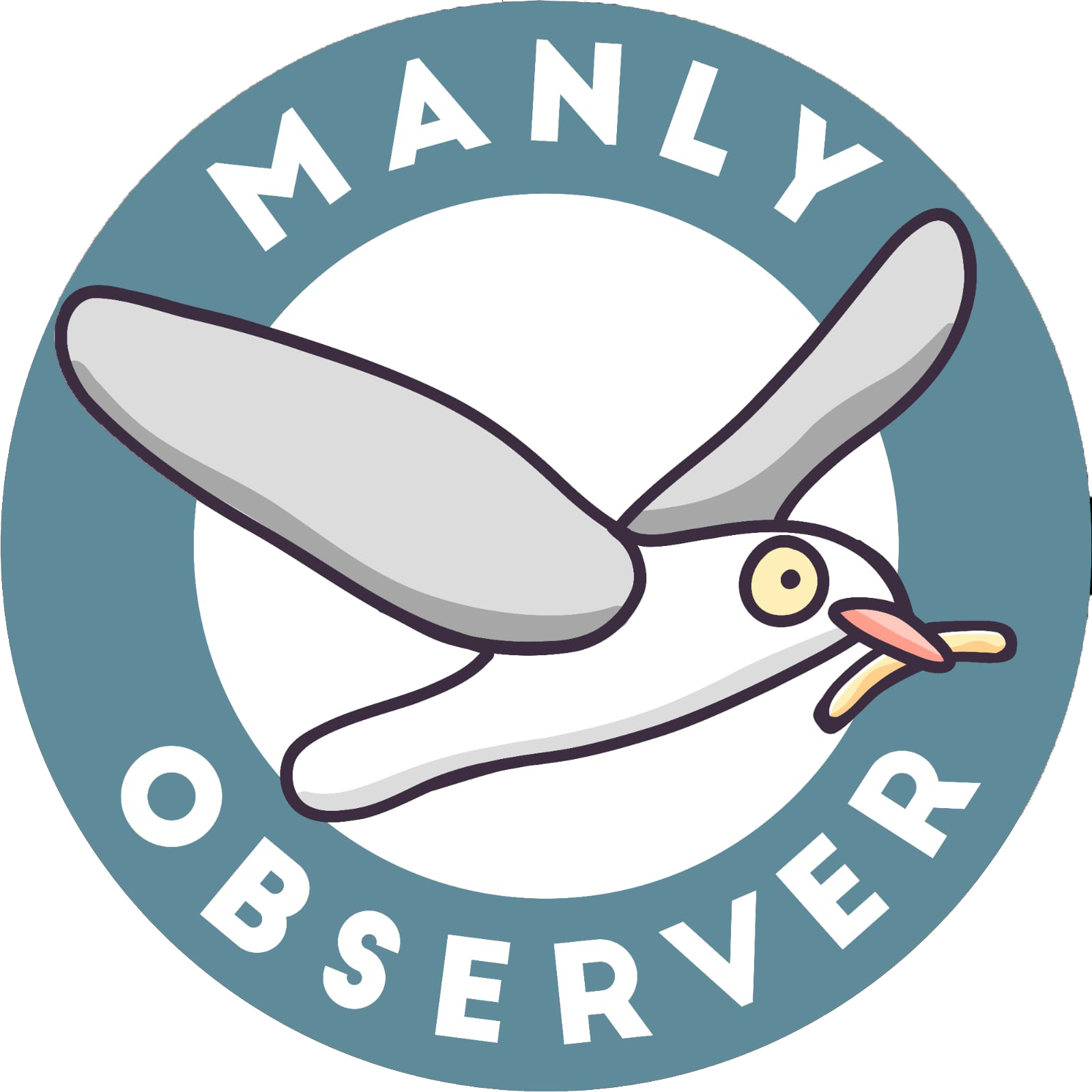Scores of locals will converge along Northern Beaches waterways this Sunday as part of Clean Up Australia Day. Community groups like Curl Curl Lagoon Friends pictured below, will meet at the lagoon bridge because there is certain to be an assortment of garbage at the site. As the weekly clean up groups will testify, our waterways are far from clean.
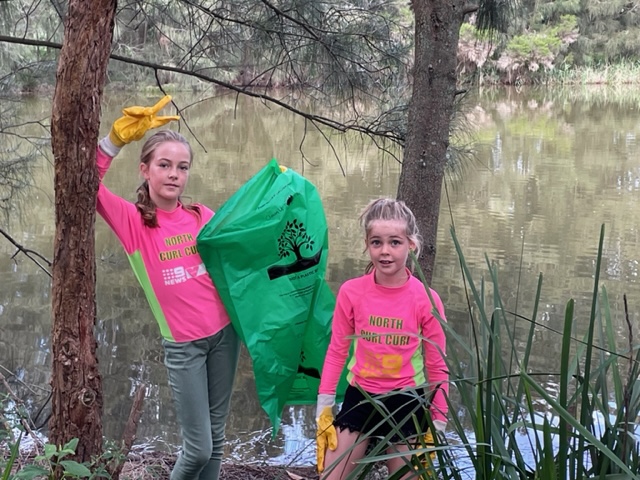

As a former tip site which leaches into the water on occasion, Curl Curl Lagoon rarely performs well in water quality tests and is excluded from regular reporting because swimming is always discouraged, though it received a relatively good C grade in the most recent water quality report we could find. Most other lagoons rate fairly well at a granular level. But what of the bigger pieces constantly passing through?
Why is there still so much rubbish despite pollution traps, and how can the situation be improved? Manly Observer set out to learn how we can turn the terrible tide.
We started looking into this some months ago when a Manly Observer reader alerted us to a build-up of assorted garbage, much of it single-use plastic, in a creek that flows directly into Narrabeen Lagoon. A fallen tree in South Creek, Cromer, effectively created a dam behind which water-borne waste had accumulated.
Because it consisted mainly of balls (this reporter counted 42, mainly tennis, cricket and the small brightly-coloured ones used by younger children) in addition to food wrappers and drink containers, it appeared the majority of the junk came from nearby St Matthews Farm Reserve, the community sports fields upstream.
Normally, this junk would have drifted into the lagoon and become lodged in mangroves and reeds, with a percentage of it taken out to sea by the prevailing currents. However, because of the recently toppled tree, the timber ‘dam’ revealed how much can build up over a relatively short period of time – we estimated a fortnight.

Garbage built up behind a fallen tree, including at least 42 balls, South Creek, Cromer. Photo: Alec Smart
Gross Pollution Traps
Mel Koeman, President of Manly Lagoon Friends, explained that the natural and most efficient methods of dealing with waterborne garbage is to install gross pollutant traps – or GPTs – along creeks or stormwater canals.
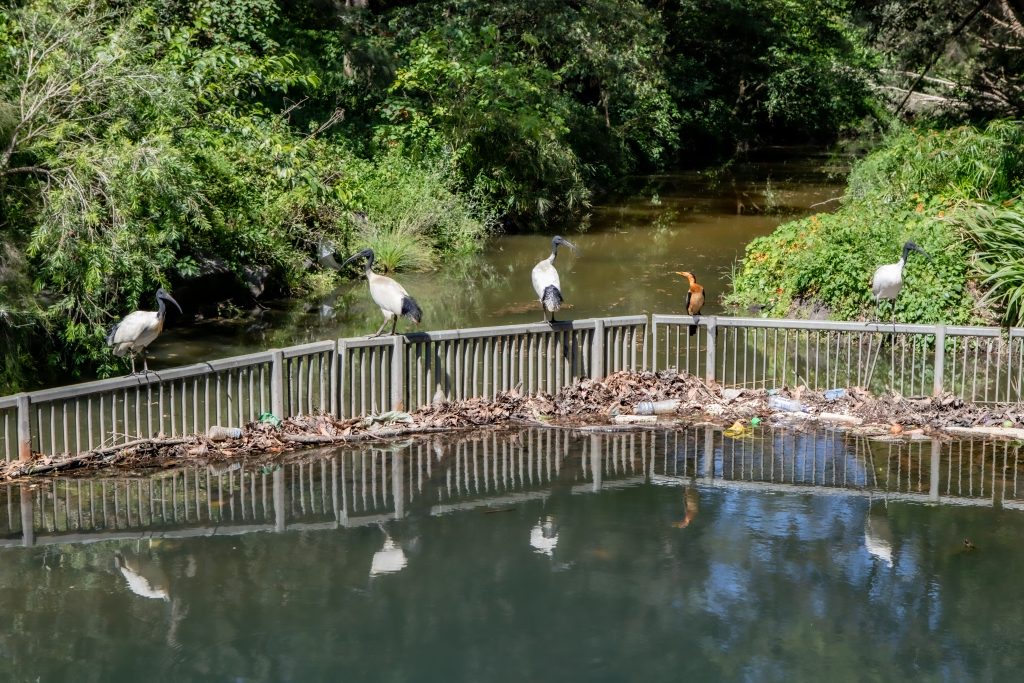
Gross pollutants are litter and debris greater than five millimetres in size. They can consist of anything from cigarette butts to plastic bags and chip wrappers. Not only can this debris contaminate our water source, it is a threat to wildlife and aquatic habitats, looks unpleasant and can smell and attract pests.
In order to filter these from our water systems, Gross Pollutant Traps remove these solids. There are several gross pollutant traps suitable for the urban landscape, including gully baskets, in-ground GPTs, trash racks and pipe nets.
Many of the creeks and stormwater runoffs on the Northern Beaches have GPTs: steel filter grates or floating booms installed along their route, which appear to be relatively successful in reducing water-borne plastics from entering the ocean during normal run-off.
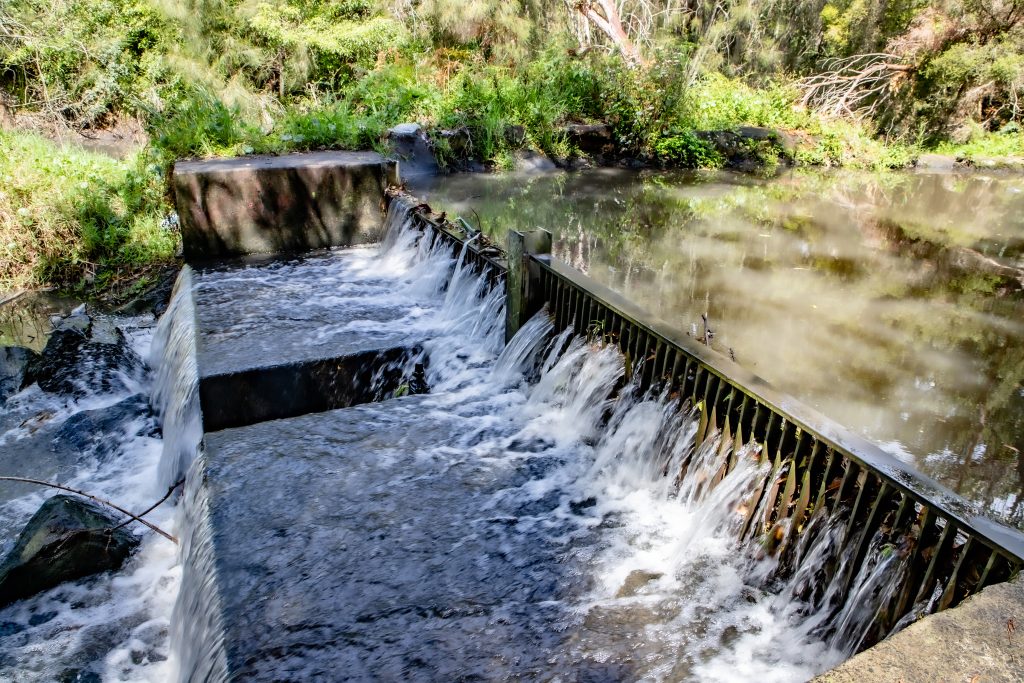
An example is the pollution trap pool on Hawkesbury Avenue at the south-western edge of Dee Why Lagoon, which was requested by Friends of Dee Why Lagoon and installed by Northern Beaches Council.
Another is the filter dam on Greendale Creek, North Curl Curl, where metal fencing creates a buffer zone between Harbord Lagoon and the nearby Brookvale industrial estate, source of all manner of packaging and the dreaded fast food containers (McDonalds, of course, although Hungry Jacks and Subway are common runners-up in the waste stakes).
280 GPTs on Northern Beaches
A Northern Beaches Council spokesperson informed Manly Observer, “Council has over 280 Gross Pollutant Traps (GPTs) installed across the local government area…
“There are a variety of GPTs ranging from small-scale pit litter traps to large scale basins with trash racks capable of capturing pollutants greater than 5mm in size.”
The Council spokesperson continued, “Council also uses underground proprietary devices (Continuous Deflection Separation {CDS} Units, Cleansalls, Humeguard etc), bio-retention and sand-infiltration systems that capture gross pollutants, sediments, heavy metals and nutrients.
“Council is continually upgrading pollutant traps and is always looking for opportunities to increase the effectiveness of these devices. New pollutant traps are being installed in even more locations. We are currently investigating the installation of a large CDS unit at Dee Why Beach which would capture more stormwater pollution and protect our coast.”
“There are a number of GPT’s currently in the Manly Lagoon that need review/repair to function better,” Ms Koeman of Manly Lagoon Friends revealed, “and a more strategic cleaning program needs to be implemented.
“I don’t believe the maintenance is expensive – a cost that could be taken up by Council as part of their street cleaning/waste disposal systems. This should be a priority for waterway management on the Northern Beaches.”
The Northern Beaches is home to four of the five coastal lagoons within the Sydney Basin: Dee Why, Harbord, Manly and Narrabeen, into which the tidal waters of the Pacific Ocean flow, collecting garbage and carrying it out on the currents.
There are 50km of creeks in six major catchments that flow into these four coastal lagoons, inevitably bringing human trash.
Narrabeen Lagoon is fed by six creeks – Deep, Middle, Mullet, Narrabeen, South, and Wheeler – whilst Manly Lagoon is fed by three – Brookvale, Burnt Bridge, and Manly – and Dee Why Lagoon is fed by the single Dee Why Creek wetlands.

Every week a number of dedicated organisations are involved in clean-up operations along the length of the Northern Beaches to remove nuisance flotsam, as well as retrieve assorted items dumped in creeks and lagoons, like shopping trolleys, bicycles and furniture.
These resolute groups include the high-profile Northern Beaches Clean Up Crew, who target different beaches and lagoons each month up and down the peninsula.
There are also the indefatigable volunteer groups dedicated to the upkeep of specific waterways and bushland, such as Manly Lagoon Friends, Friends of Narrabeen Lagoon Catchment, and Friends of Dee Why Lagoon.
But during bouts of torrential rain, or peak tourist days, the vigorous volunteers struggle to keep on top of the mass of waste materials that blow or flow into the creeks, estuaries and lagoons, and much of it continues on to the Pacific Ocean if they don’t intercept it in time.
The months of intense rains brought by the La Nińa weather phenomenon during the 2021-2022 summer caused significant localised flooding and carried a surplus of street garbage into the waterways and out into the sea.
Tremendous quantities of garbage bypasses pollutant traps
A Council spokesperson told Manly Observer, “Council’s annual maintenance budget for clearing GPTs is approximately $700,000 across the LGA. Maintenance methods vary depending on the type and location of device. The amount of pollutants captured varies according to weather and environmental factors.
“In the 2021/22 financial year, 700 tonnes of material were removed from GPTs. In 2020/21, 1264 tonnes of material were removed and in 2018/19 it was 1,800 tonnes.”
Despite the Council’s maintenance of GPTs, Northern Beaches Clean Up Crew reveal that during dedicated rubbish collections they pick up enormous quantities of garbage.
Although some of the litter, especially that collected during beach clean-ups, is left behind by visitors, the rubbish washed along waterways into lakes and lagoons, either bypassing GPTs or flowing along creeks where GPTs are not installed, was tremendous.
In their October 2022 clean-up of Dee Why Lagoon, for example, Northern Beaches Clean Up Crew retrieved “2130 plastic bottles, 679 cans, 2868 pieces of hard plastic, 200 straws, 20 tyres, 16 pieces of clothing, 55 face masks, 35 shoes, 407 balls, plus 60 kilos of soft plastic… This equals to more than 50 big bags full of rubbish.”
During their Narrabeen Lake clean-up of June 2022, they collected “Thousands of bottles, plastic, toys, cigarettes, a bike, old VCR tapes and much more were picked up from the lagoon.”
Just a few months earlier, another clean-up of Narrabeen Lake retrieved “6940 pieces… including about 800 pieces of shattered glass, a UTE liner, a three-legged plastic chair, bicycle parts, a disabled toilet sign and lots of single use plastic items including 210 straws.”
Similarly, their Manly Vale Creek clean-up of April 2022 yielded “tents, car parts, a wig, a heater, soccer goal posts, soccer goal nets, balls, old rusty pipes and of course the usual suspects: bottles, cans, plastic bags and food wraps.”

Better booms needed?
Some of the floating booms in place along the Northern Beaches, such as Manly Creek, are easily overwhelmed by floating garbage during peak surges of stormwaters. We visited Cooks River in Sydney’s Inner West and tidal canals around Homebush Bay and observed floating steel pollutant traps that appeared were markedly more efficient in capturing water-borne garbage.
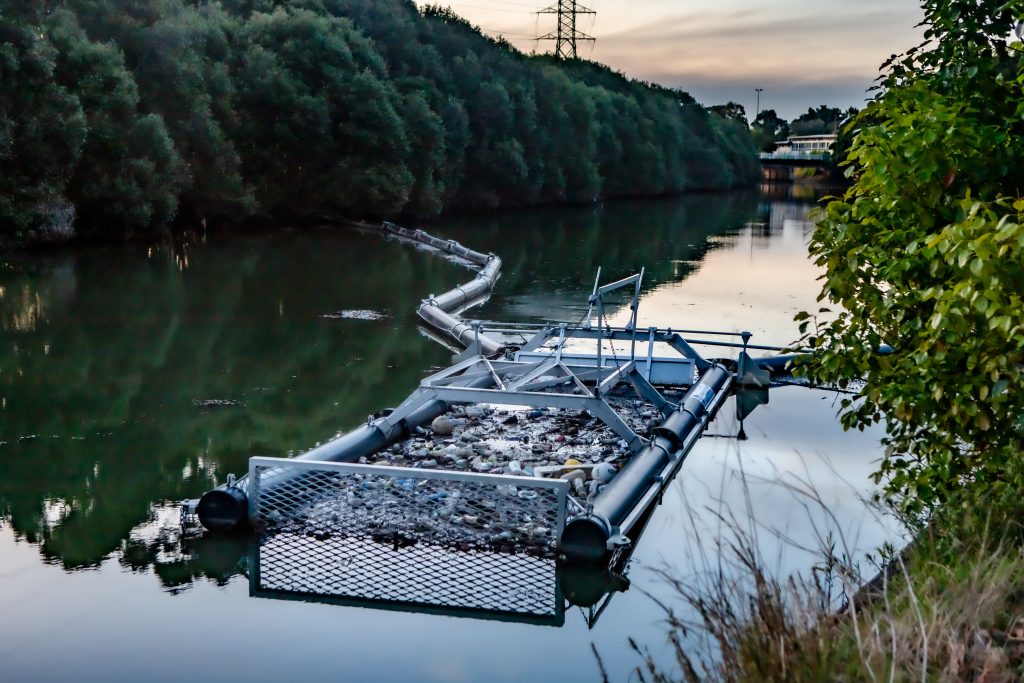
Although the estimated population of the Northern Beaches is around 265,000 people, the combined population of Canada Bay, Canterbury and the Inner West that surround the aforementioned Cooks River and Homebush Bay is approximately double in size – meaning infinitely more waste products are discarded.
Should the Northern Beaches install the more efficient floating pollution traps that appear along Cooks River and tidal canals flowing into Parramatta River?
‘We’re working on it’, seems to be the message from Council: a spokesperson told Manly Observer, “Council collaborated with the Department of Planning, Industry and Environment to develop a Draft Stormwater Management Study that will strengthen Council’s approach to prioritising GPT locations and target specific pollutants.

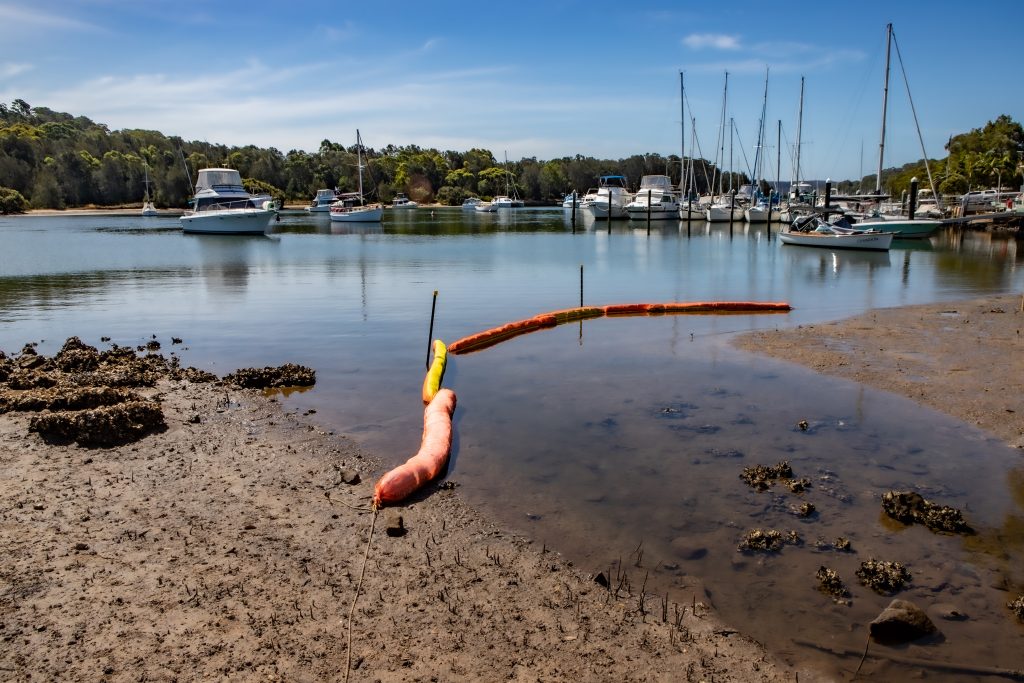
Northern Beaches Mayor, Michael Regan said in its recent budget Council had committed $8.8m towards stormwater management projects to reduce stormwater runoff and improve the water quality of stormwater entering our natural waterways.
“Heavy rainfall over recent years has created some challenges, but we are powering ahead with the roll out and upgrade of gross pollutant traps across the LGA. These traps will capture waste before it reaches our beaches,” he said.
“We are also working hard to reduce litter from ending up in stormwater in the first place, through education programs and regular street sweeping. I encourage everyone to play their part in preventing stormwater pollution. Together we can help preserve and protect our precious waterways.”
Conservation and clean-up crews:
Find a Clean Up Australia Day location
https://www.cleanupaustraliaday.org.au/join-a-clean-up
Northern Beaches Clean Up Crew
https://www.northernbeachescleanupcrew.com/
Manly Lagoon Friends
https://www.manlylagoonfriends.org/
Friends of Dee Why Lagoon
Friends of Narrabeen Lagoon Catchment
https://www.narrabeenlagoon.org.au/
RELATED READING:
Curl Curl detox efforts need to be replicated around the earth, says expert
Shelly Beach clean-up attracts 100 volunteers

